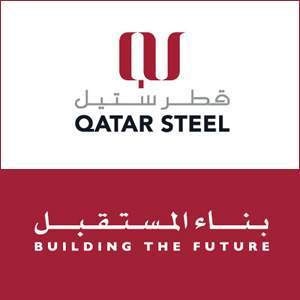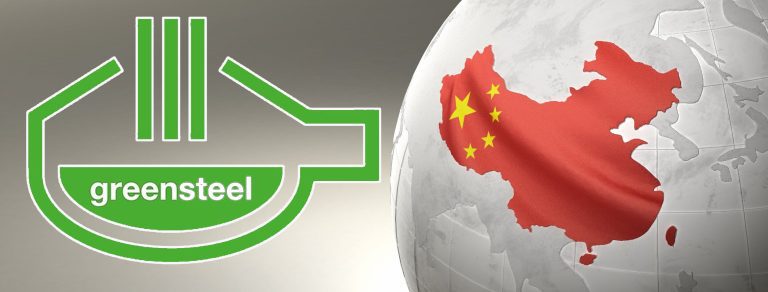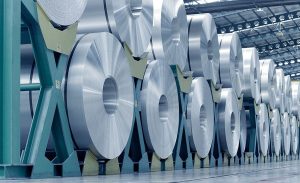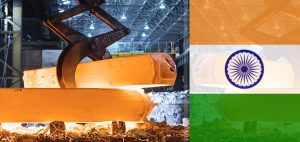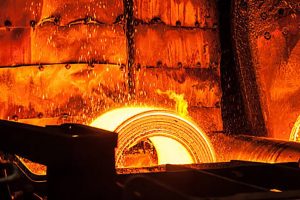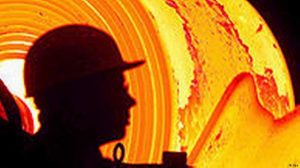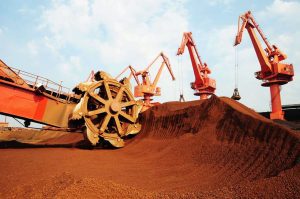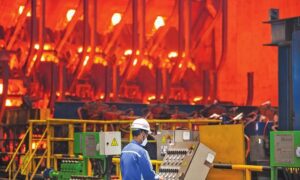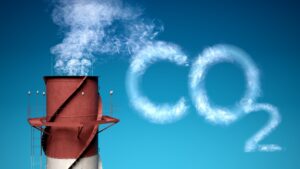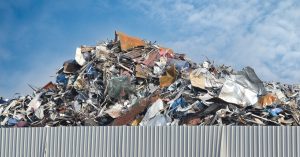It is essential that emissions reduction efforts focus on boosting green steel production so that the world can go a long way toward achieving its climate goals in carbon-intensive sectors.
According to the Energy Research Unit, iron and steel production represents 3.4 billion tonnes or 7% of global carbon dioxide emissions.
According to a recent report from Wood Mackenzie, a research firm, China accounts for more than 60% of steel production and related emissions, so it should lead the sector’s decarbonisation.
In order to achieve the 1.5°C global temperature target by 2050, emissions from the iron and steel sectors must be reduced by more than 90%, compared to current levels.
How to switch to green steel
The steel industry faces very significant decarbonisation challenges, as it has historically relied on fossil fuels, especially coal, which accounts for 70 per cent of the total production, according to data from the World Coal Association.
Wood Mackenzie believes that decarbonizing the iron and steel sector requires nearly $1.4 trillion in investments to put the industry on track to achieve carbon neutrality by 2050.
The world’s investments in energy systems were estimated at 2.1 trillion dollars in 2019 then became 4.4 trillion dollars, which the world needs annually from 2021 to 2050.
Under the scenario of reducing temperatures to 1.5 degrees Celsius, with a total investment of 131 trillion dollars from 2021 to 2030, 98 trillion dollars are investments targeting government plans and 33 trillion dollars in additional investments.
Boosting green steel production, which relies on low-carbon technologies, also needs a real revolution along the value chain, according to the report seen by the Energy Research Unit.
In order to achieve carbon neutrality by 2050, three-quarters of steel production must rely on low-carbon technologies, such as renewable energy, clean hydrogen, and carbon capture and storage.
In a previous report, Wood Mackenzie predicted that carbon emissions in the steel industry would decrease by 30% by 2050 to reach 2.332 billion tonnes if the green hydrogen in the direct reduction process of iron and carbon capture and storage technology in steel production role was enhanced.
This depends on promoting the commercialization of new technologies and supporting green policies, including raising carbon prices and increasing investments.
China’s role in green steel production
Much of the switch to green steel depends on China alone, as steel emissions in the world’s second-largest economy are expected to fall by more than 95% of the current levels by 2050 to meet its climate goals, and this presents a significant challenge because nearly all production comes from kilns emission-intensive smelting.
Indeed, China’s steel producers have not overcome the first hurdles to switching to green steel, as evidenced by the fact that the list of major companies in the sector that have announced strategies to reduce emissions includes very few Chinese companies.
To encourage the industry, China launched a nationwide carbon emissions trading system. However, the carbon prices and policy support towards the green steel level did not rise to the level that would provide the required investment.
Current carbon prices are $7 per tonne in China, while the required investment in clean steelmaking technologies would require above $100 per tonne.
What about the role of consumers in China?
The massive levels of capital investment and high carbon prices would automatically drive up the green steel prices, as manufacturing costs are expected to rise by $100 per ton, in line with climate targets.
Therefore, consumers’ desire to purchase green steel may play a significant role in decarbonizing the industry, given the massive size of the Chinese market.
Despite the massive challenges facing the green transformation of China’s steel industry, the country’s progress in the renewable energy and electric vehicles sectors gives hope that it can bring in more investments and clean technologies to be a leader in decarbonizing iron and steel.





